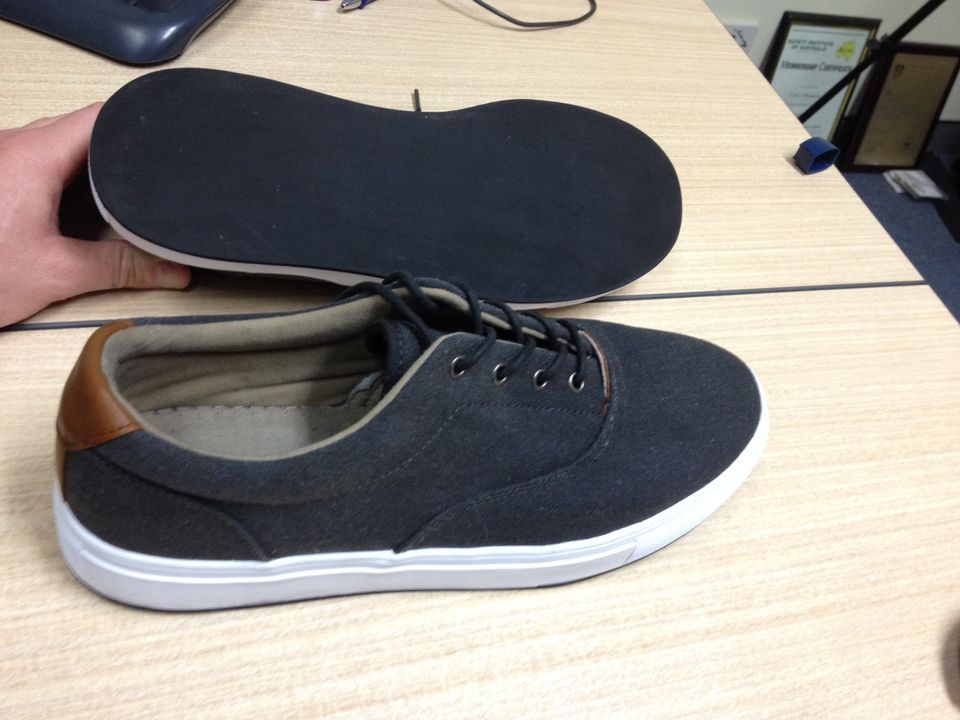Safe Environments are one of only two NATA accredited slip testing companies in Australia that can undertake the inclining ramp test methods. These two test methods being part of the Australian slip test standard AS 4586 Slip Resistance Classification of Pedestrian Surface Materials include the:
While these two Australian slip test methods are formal standards to provide slip ratings for flooring products, Slip Check can provide other specialist slip tests. One of the specialised slip tests that Slip Check can provide is the RAPRA CH0001 test method.
The RAPRA CH0001 slip test method is essentially another ramp based slip test which uses flat soled shoes that are shod with Four S (Slider 96) rubber material. The contaminant in this instance is water, similar to the barefoot ramp slip test method, unlike oil that is used for the oil wet ramp slip test.
The purpose of the RAPRA CH0001 slip test may be seen twofold. One purpose of the RAPRA CH0001 slip test is to assess the slip resistance of surfaces where people will predominantly be wearing float soled shoes with water as a contaminant. This can be useful where it may be considered that the wet pendulum slip test may provide unexpected slip test results. The RAPRA CH0001 should be seen as an adjunct test to confirm the slip resistance of surfaces.
The Australian Standard for slip testing using the wet pendulum method outlined in AS 4586 Appendix A notes that the test may be unsuitable for surface with a volumetric displacement of 4 cm/dm2. With that in mind the RAPRA CH0001 test method can assist to determine whether a surface may have suitable slip resistance.
The second useful purpose of the RAPRA CH0001 slip test is a standardised measure of the slip resistance of shoes. When there is a slip and fall incident which may result in legal proceedings, many experts only consider the floor surface. However the experts at Slip Check can provide additional testing of shoes to assess against the standardised shoes in the RAPRA CH0001 slip test. The slip test resistance of the shoes can then be assessed to determine whether the shoes may have been a significant contributing factor for the slip and fall incident to occur.
The RAPRA CH0001 slip test provides the mean angle of inclination that walkers can achieve with the four S (Slider 960 shod shoes. While the results do not mean that the surface is safe to walk up to that angle on, it can however mean that is the point at which people may be capable of achieving if taking care. Only experts with experience with the RAPRA CH0001 test and the pendulum test should provide interpretation to those results.
In Australia, the two scientists that have experience with both tests and who have both conducted research into these slip test methods is Mr Richard Bowman, Principle of Intertile Research and Mr Carl Strautins, Principle of Safe Environments. Both experts are previous researchers at the CSIRO.
For more information on slip tests of floors and shoes or assistance as an expert in slip and fall matters, please contact the Slip Check team based in Sydney or Melbourne.
Author: Carl Strautins

Email: Carl@SafeEnvironments.com.au
Web: www.SafeEnvironments.com.au
As a principle at Safe Environments, Carl Strautins first started his career at CSIRO conducting research in slip resistance and developed the accelerated wear slip resistance test. He holds a degree in materials science, masters in occupational health and safety and a masters in science in occupational hygiene, Carl provides guidance to industry to minimise the risk of slip and fall incidents. He is engaged on a regular basis to provide expert opinion for disputes and legal proceedings.


